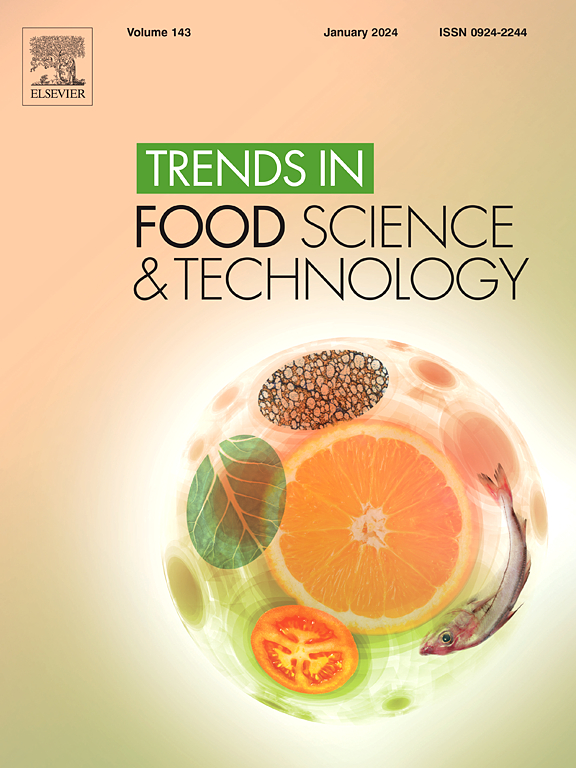From farm to table: application and challenges of yeast in the growth, preservation and fermentation of fruit
IF 15.4
1区 农林科学
Q1 FOOD SCIENCE & TECHNOLOGY
引用次数: 0
Abstract
Background
Fruit and their derived products such as juices and wines are essential components of the human diet. However, fruit production and processing face challenges at multiple stages, including preharvest, postharvest, and fermentation, due to fungal infections, decay, and quality deterioration.
Scope and approach
This review summarizes recent advances in yeast applications in preharvest, postharvest, and fermentation. It focuses on mechanism of antagonism in preharvest and postharvest use, the impact of yeasts on fermentation quality and safety. We also reviewed the application of synthetic biology-based multi-species yeast systems in the unified grape-to-wine system, and the challenges and prospects we faced.
Key findings and conclusions
Yeast antagonists contribute significantly to the management of plant pathogen-related diseases through inhibiting pathogens, triggering host defenses and modulating the host-associated microbiome. During fermentation, yeasts affect the chemical composition and sensory properties of fruit wines. Many factors affect the biological activity and operational convenience for agricultural and oenological applications. However, it is difficult for a single yeast to achieve the comprehensive effect in a unified grape-to-wine ecosystem. To solve these problems, synthetic biology-based multi-species yeast systems are recommended in a unified grape-to-wine ecosystem. Challenges remain in strain adaptability, cost, regulatory issues, and consumer acceptance. Future research should aim to enhance strain performance, optimize formulations, and explore synthetic biology to support the integrated use of yeasts from field to table.

从农场到餐桌:酵母在水果生长、保存和发酵中的应用和挑战
水果及其衍生产品,如果汁和葡萄酒,是人类饮食的重要组成部分。然而,由于真菌感染、腐烂和质量恶化,水果生产和加工在收获前、收获后和发酵等多个阶段面临挑战。本文综述了近年来酵母在采前、采后和发酵方面的应用进展。重点介绍了酵母在采前和采后使用中的拮抗作用机理、酵母对发酵质量和安全的影响。综述了基于合成生物学的多菌种酵母体系在葡萄制酒统一体系中的应用,以及面临的挑战和前景。酵母拮抗剂通过抑制病原体、触发宿主防御和调节宿主相关微生物群,在植物病原体相关疾病的管理中发挥着重要作用。在发酵过程中,酵母会影响果酒的化学成分和感官特性。影响其生物活性和操作便利性的因素很多。然而,单一酵母很难在统一的葡萄-葡萄酒生态系统中达到综合效果。为了解决这些问题,建议在统一的葡萄到葡萄酒生态系统中使用基于合成生物学的多物种酵母系统。挑战仍然存在于应变适应性、成本、监管问题和消费者接受度方面。未来的研究应着眼于提高菌株性能,优化配方,探索合成生物学,以支持酵母从田间到餐桌的综合利用。
本文章由计算机程序翻译,如有差异,请以英文原文为准。
求助全文
约1分钟内获得全文
求助全文
来源期刊

Trends in Food Science & Technology
工程技术-食品科技
CiteScore
32.50
自引率
2.60%
发文量
322
审稿时长
37 days
期刊介绍:
Trends in Food Science & Technology is a prestigious international journal that specializes in peer-reviewed articles covering the latest advancements in technology, food science, and human nutrition. It serves as a bridge between specialized primary journals and general trade magazines, providing readable and scientifically rigorous reviews and commentaries on current research developments and their potential applications in the food industry.
Unlike traditional journals, Trends in Food Science & Technology does not publish original research papers. Instead, it focuses on critical and comprehensive reviews to offer valuable insights for professionals in the field. By bringing together cutting-edge research and industry applications, this journal plays a vital role in disseminating knowledge and facilitating advancements in the food science and technology sector.
 求助内容:
求助内容: 应助结果提醒方式:
应助结果提醒方式:


